Military aviation expert Tom Cooper continues his analysis of the war in the sky and on the battlefield between Ukraine and the Russian Federation. For your attention, the fourth part of the analysis of the war in the air against the Russian air defense in the southern direction
To conclude this series of features, let me start with the question with which I’ve ended the Part 3: how do you ‘outfight’ the S-400?
For the start, and everybody’s orientation, the map providing an approximate reconstruction of the Russian integrated air defence system for southern Kherson, southern Zaporizhzhya and northern Crimea, as released already back in August:
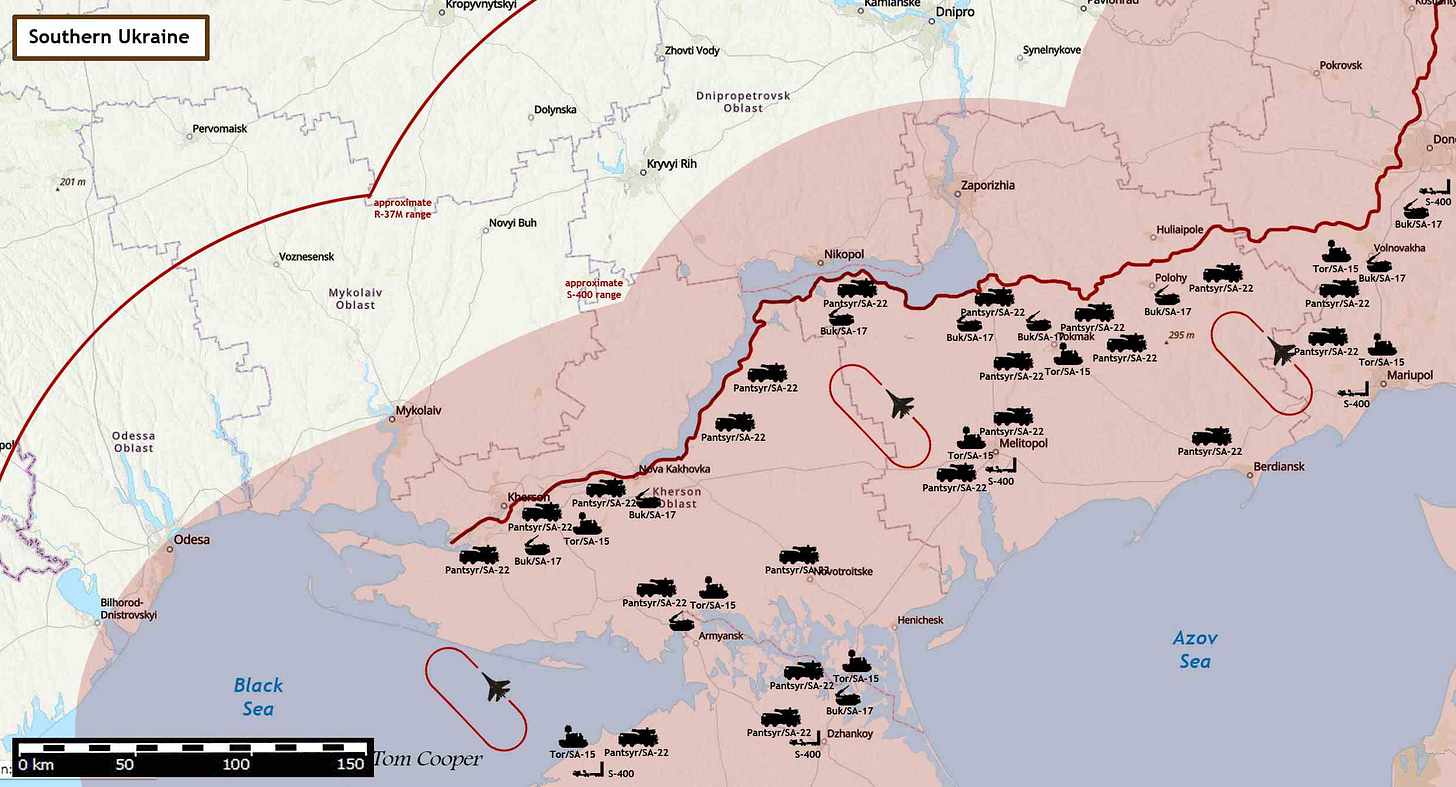
….and then let’s not forget that sometimes during July or August (sorry, can’t find the date, right now), Ukrainians have released a video showing them hitting multiple elements of a Russian S-300 SAM-system deployed in southern Kherson.
From all this, we can deduct quite a few things, actually.
The first set of conclusions is what in terms of air defences has the VKS deployed on the Crimean, and north-west of it, in recent times. Already before the war, it used to have four S-400 SAM-sites on the peninsula. These included about 40 S-400 launchers, at least 12 Buk-M3 launchers, at least 24 Pantsyrs and 12 Tor-M2 launchers. These were certainly reinforced ever since. The S-300 in southern Kherson was a more recent appearance, deployed to ‘beef-up’ the defence of the Crimea. To create an additional layer in front of the local IADS.
No doubt, this was a logical solution, and a good one. Between others, it further expanded the coverage of the Russian IADS in north-western direction: theoretically, it was forcing the PSU’s Su-24s to release their Storm Shadow/SCALP-EGs from longer range, in turn preventing them from reaching Sevastopol and targets further east. Something like this:
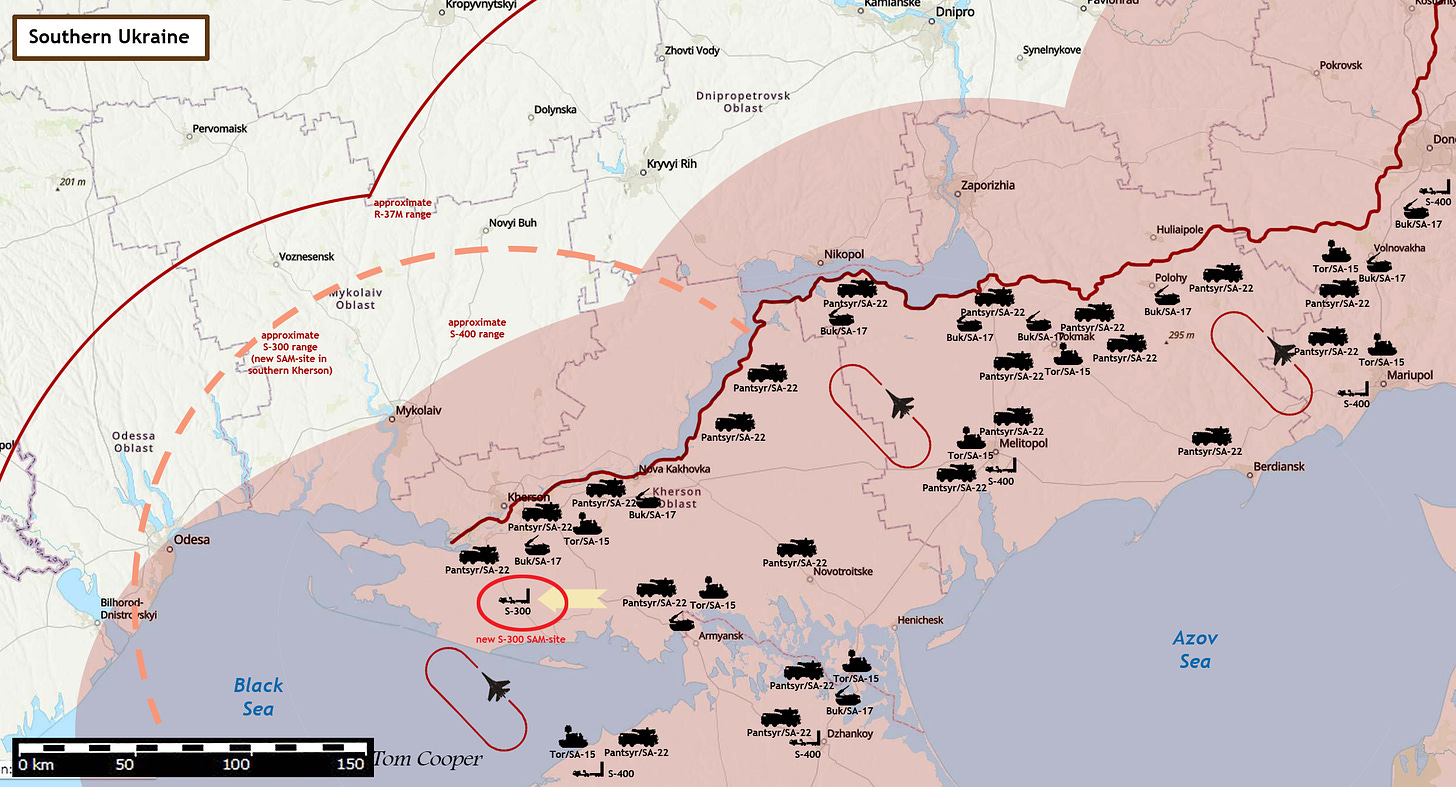
However, ultimately, this idea didn’t work – and it didn’t work for several reasons, where I have to continue with a ‘warning’ of sort: the following is lots of deduction. Except for that S-300 in southern Kherson, nothing supported on ‘facts’. It’s something like ‘the way I would do it’.
***
Something like ‘Option A’ starts with the availability of an advanced electronic warfare (EW) system, or several EW-systems, and their deployment, for example, in the Kherson (City) area.
As described in the Part 3, radars of the S-400 SAM-system are very powerful and very versatile. The situation is even more complex when one considers additional radars operated by the Russian Buk-, Tor-, and Pantsyr SAM-systems in southern Kherson - all of them networked into the Russian IADS. Therefore, the EW-system in question would have to be very powerful and very versatile, too. This is why ‘multiple different EW systems’ would be more useful: each would do one part of the job, counter different of Russian radars. Either that one system, or ‘all of them combined’, must be powerful enough to have effects approximately like shown on this map:
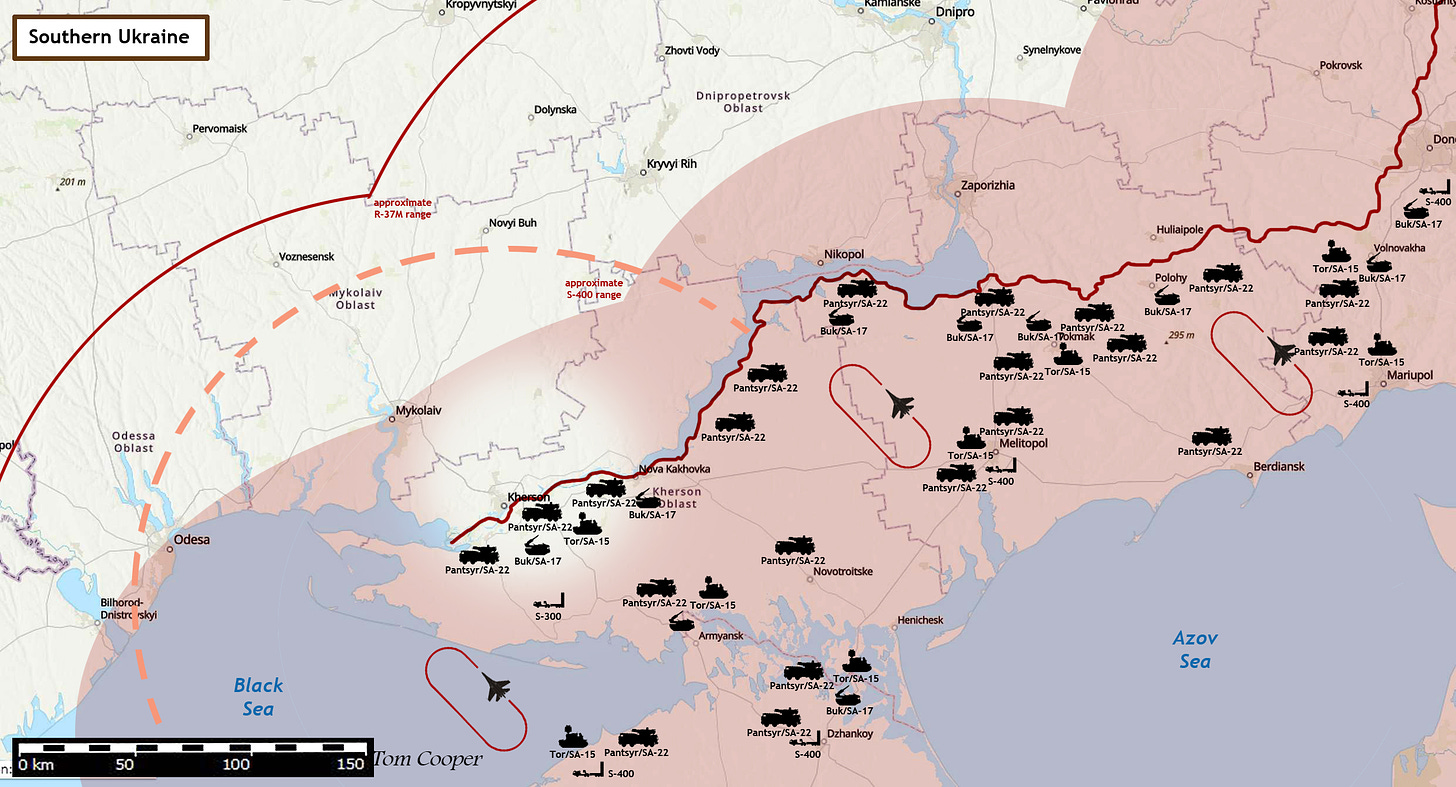
With other words: ‘all of a sudden’, there is a big gap in the Russian radar- and SAM coverage.
As next, the point would be to combine multiple different weapons to ‘widen and secure’ that gap - through striking selected Russian air defence systems. For example, a combination of:
AGM-88 HARM anti-radar missiles released by PSU’s MiG-29s and Su-27s, and
either GMLRS’ fired by ZSU’s M142 and M270 launchers, or
GBU-62 JDAM-ERs deployed by PSU’s Su-24s and Su-27s.
Don’t know for sure and, all the related ‘news’ we’ve seen was - foremost - that video of an Ukrainian strike on the Russian S-300 SAM-site in southern Kherson, which I can’t find right now. But, if this has happened that way, then the effects looked something like this:

…and the result was a nice, deep ‘corridor’ through the Russian IADS network in that part of Ukraine. Something like this:
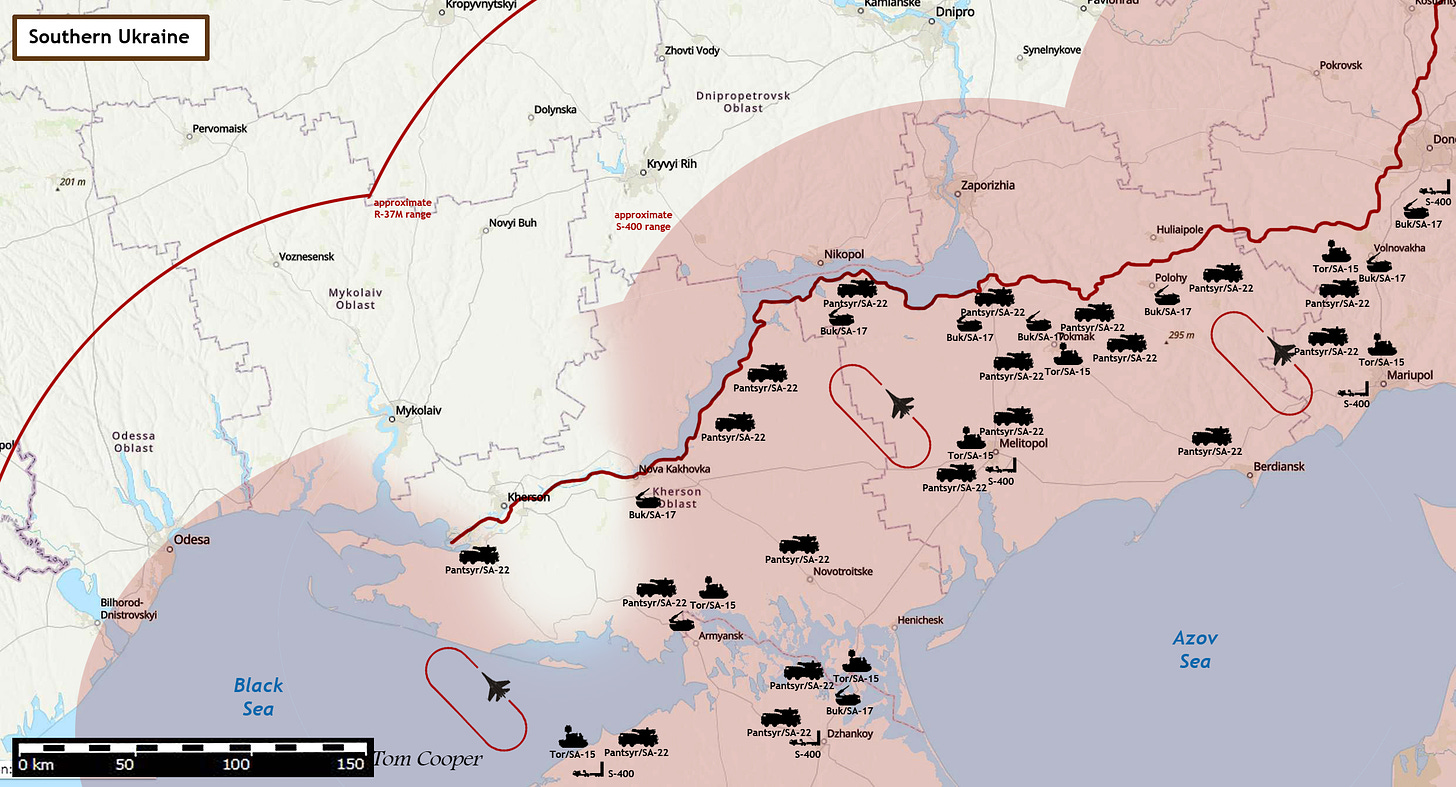
Why was - or would - such a ‘corridor’ be important?
Because it’s ‘opening the way’ for Storm Shadows/SCALP-EGs deep into the areas occupied by the Russians:
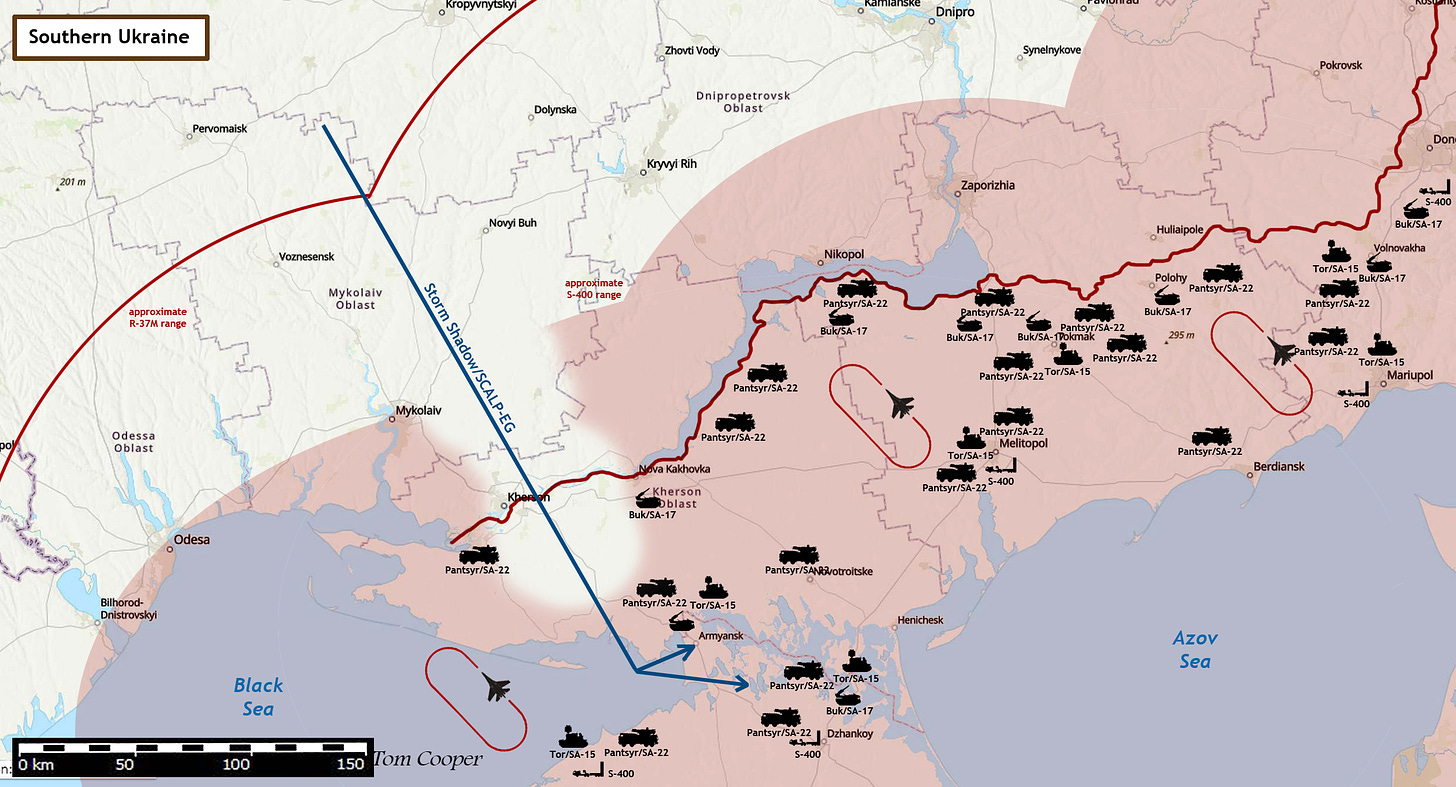
Because that way Ukrainians made sure that the Russians were detecting the incoming missiles only when it was too late to react to them: too late to detect, track and target them with VKS interceptors and SAMs. Because, when the Russians are late with detecting incoming missiles, all the 100-700 S-400 missiles on the Crimea, plus all the other hundreds of missiles of their other SAM-systems deployed there - are ‘all for nothing’. Entirely useless.
….and that’s just something like ‘Option A’. There are several alternatives, too.
The ‘Option B’ would be reliant on ADM-160B MALD decoys - which are known/confirmed to have been delivered to Ukraine, and deployed by the PSU - to force the VKS SAMs to shoot their launchers empty. To busy them with decoys to an extension where they are left without re-loads. Here one should mind that the routes of both ADM-160B and Storm Shadow/SCALP-EG can be prep-programmed. With other words: one can route them around the Russian SAM-systems. Foremost: one can route ADM-160Bs into one direction, so to distract the Russian air defences towards them, while actually striking with Storm Shadow/SCALP-EGs from an entirely different direction.
Here is one idea in this regards: say, deployment of ADM-160Bs to simulate Storm Shadow/SCALP-EG strikes on targets in the Novotroitske, Melitopol, or Armyansk, or Dzhankoy areas. This can be done with relatively few (for example: 4) ADM-160Bs released at the same time point in time (or, more realistically: within seconds of each other).
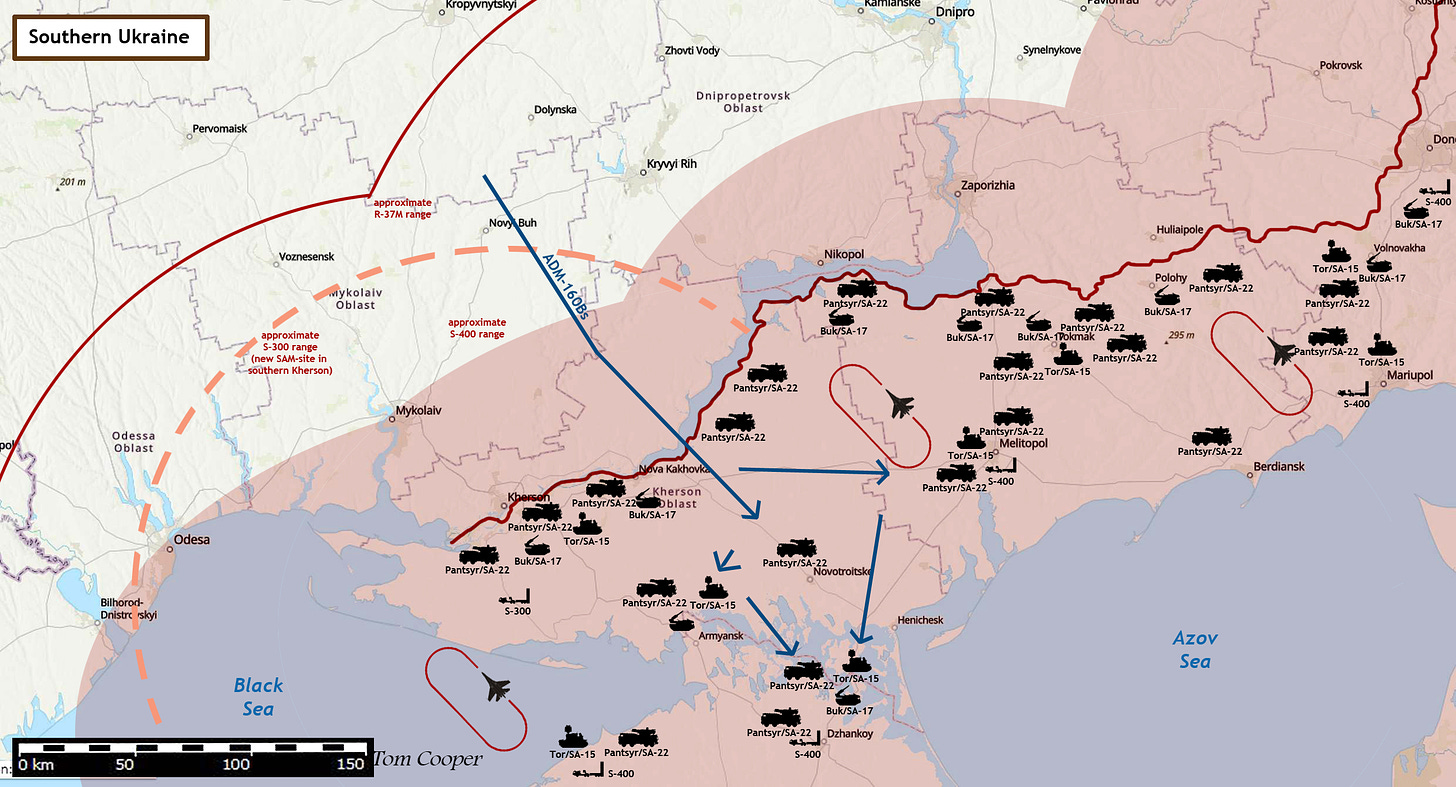
….and then follow-up with Storm Shadow/SCALP-EG along the same or similar route, exploiting the fact that ADM-160Bs have prompted the Russians into firing lots of missiles at them. By the time Storm Shadows/SCALP-EGs would be approaching their targets, the Russians would then be out of missiles to fire at them.
Of course, this is anything else than certain. Indeed, at that point in time, anybody versed in air defence systems (but especially Russians in that position) is likely to start discussing electro-technical and kynematic performances of systems in question. See: Storm Shadow is traveling at the speed of 1,100km/h; Pantsyr-M can detect it from 50km away; that means Pantsyr-M has so-and-so much time to react, fire so-and-so many missiles…..and, they’re almost certainly going to conclude: there is no way the missile to get trough.
Actually, this is a mix of wishful thinking (for example, the VKS has only a handful of Pantsyr-Ms in service), and theory. In practice, the situation is much more complex - and also explaining why do we then get to see Pantsyrs 'firing like mad at Storm Shadows’ in one direction - only to get blown to Mars by one approaching from different direction, like on the video from which this still comes:
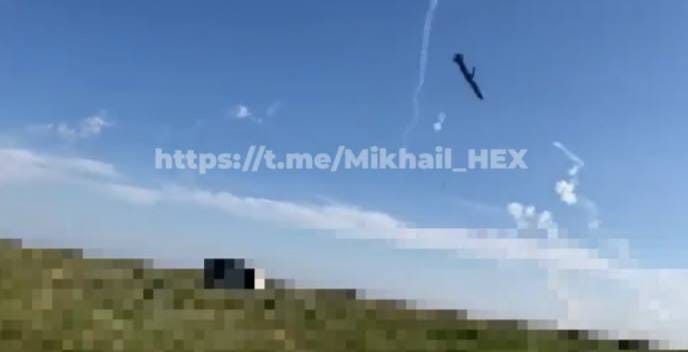
This is where I’m getting to the ‘Option C’: the release of two (or more?) streams of ADM-160Bs at/around the same time, mimicking ‘another Storm Shadow/SCALP-EG strike’. For example: one of the ADM-160B-streams being directed at the Russian S-300 SAM-site in southern Kherson, the other somewhere else:
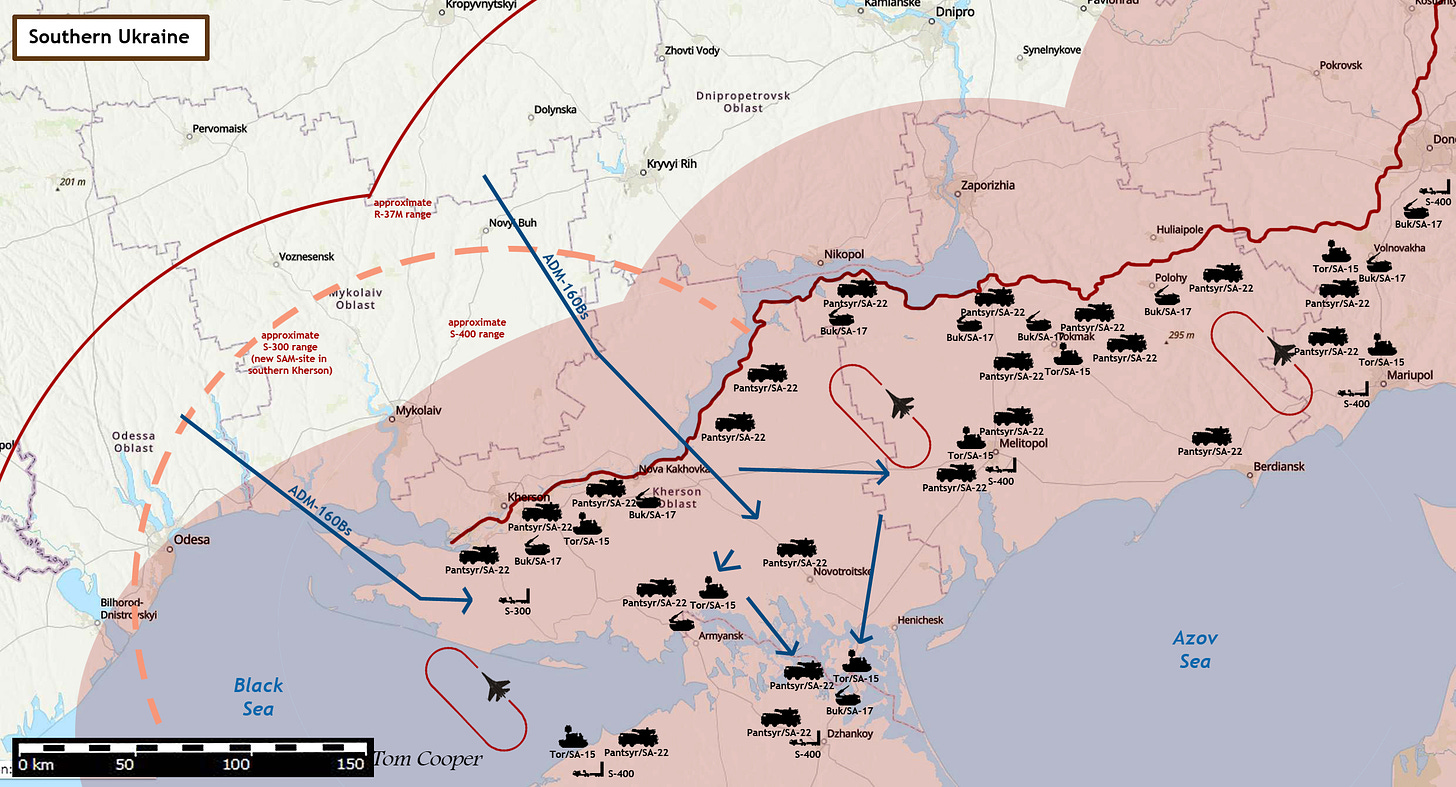
This would be something the Russians could not ignore: they would send their MiG-31s, and Su-35s, and direct all their SAM-sites to power up their radars and open fire. All with the aim of shooting down the ‘damned Storm Shadows’….. while, actually, these would be released slightly after ADM-160s, and then approach their actual target along a different route:
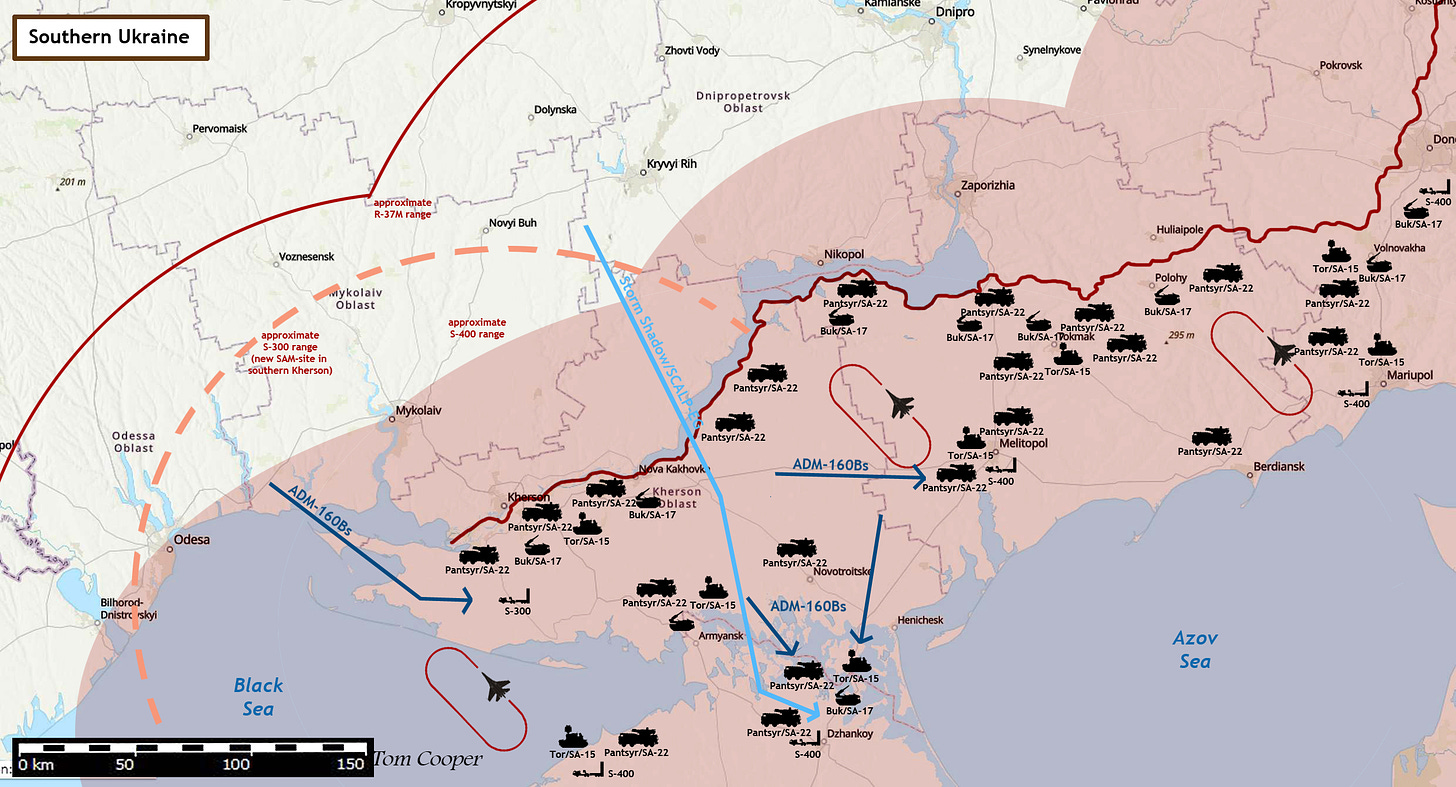
Moreover, mind that ADM-160Bs can not only mimick such missiles like Storm Shadow/SCALP-EG, but also combat aircraft. And they can be ‘multiplied’ by deployment of Ukrainian-made UAVs. Thus, one can use a mix of ADMs and UAVs to ‘play’ with the Russian air defences, before following-up with real Storm Shadow/SCALP-EGs, like this (there’s an endless number of variations in such operations):

‘Bonus’: thinking these would be Storm Shadows/SCALP-EGs, the Russians would not only fire lots of missiles in attempt to intercept ADM-160Bs (and/or UAVs), but also their attention would be drawn away from the route along which Storm Shadow/SCALP-EGs would actually approach.
Conclusion: combined with the stealth-shape of missiles like Storm Shadow/SCALP-EG, and - very likely - with operations of different of their other UAVs, Ukrainians are overwhelming the Russian air defences to the point where their chances of actually intercepting one of Storm Shadows is next to zero.
Precisely that is why the PSU not only managed to badly damage and thus ‘block’ - at least for a few weeks - all the bridges connecting the Crimea with mainland Ukraine, back in July and August, and although all of these were well-protected by the combination of S-400s/Buks/Tors and Pantsyrs. Of course, there are ‘few other details’ in this game, some of which I do not feel free to talk about, but: that’s also the essence of how Ukrainians have managed to overwhelm even denser air defences of Sevastopol and destroy two vessels of the Russian Black Sea in the dockyards there.
For the end, please keep in mind that over the last month ‘or so’, Ukrainian SBU launched its ‘strategic bombardment offensive’ on targets in Western Russia and all the way up to Moscow. This prompted the VKS to re-deploy lots of SAM-systems in that direction. Which in turn meant that it was left with less SAM-systems to bolster the defences of the Crimea.
This text is published with the author's consent. First published here